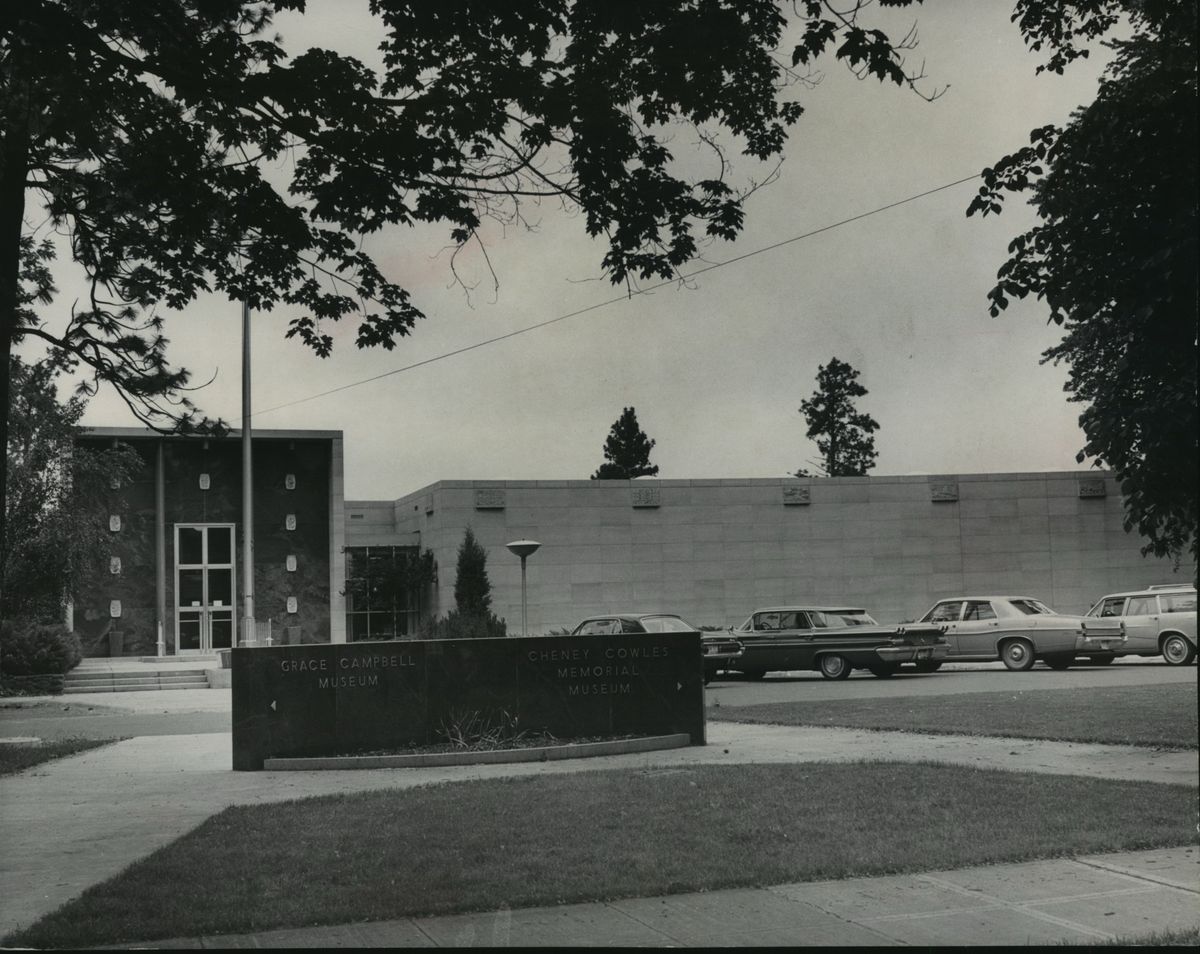Northwest Museum of Arts & Culture celebrates 20 years since renovation, renaming

As the holiday season moves into full swing, supporters and organizers at the Northwest Museum of Arts & Culture have another December anniversary to celebrate. This month, it will have been 20 years since the museum’s $30 million renovation and expansion project came to a close.
“Unfortunately, with COVID, we can’t have the big birthday bash we would have loved to do,” executive director Wes Jessup said. Instead, the museum will offer 20% off admission Sunday. Visitors will also have the chance to hear collections curator Valerie Wahl speak about the history of the museum during a talk at 1 p.m.
When former museum director Janie Johnson signed on in 1999, her primary goal was to oversee the renovations. Before agreeing to take on the project, Johnson was set to retire from her work in higher education. But when the museum board approached her and laid out the importance of the project, she just couldn’t say no.
“We had a timeline of about two years to get it built and opened,” she said. “It was exhausting, but it was also an important time in my life. And I’m glad I did it.”
The project, which included renovating the original Cheney Cowles facility as well as expanding the campus, was never going to be cheap. But Johnson knew where to find help.
State commerce director Lisa Brown, a legislator at the time, secured an initial $20 million in funding while Johnson headed the fundraising necessary to acquire the remaining $10 million.
“I think it’s off to a really good start,” Johnson said, praising Jessup for his efforts over the past five years and especially since the coronavirus pandemic shutdowns. “He adds a new dimension to the museum … bringing in new, exciting exhibits, increasing membership and new educational programs.
“He also came in at a very challenging time because with the COVID and restrictions, I think he’s done an amazing job of keeping things really afloat.”
Two decades down the road from completing a renovation project that would bring them into the 21st century, the Northwest Museum of Arts & Culture, formerly the Cheney Cowles Museum, continues to look for new ways to build.
Since 2001, the completed renovations have allowed the MAC to begin accommodating larger-scale, traveling exhibits like last year’s “Pompeii: the Immortal City,” 2011’s “Leonardo da Vinci: Man – Inventor – Genius” and, currently, “Louis Comfort Tiffany: Treasures From the Driehaus Collection.”
The upcoming “DreamWorks: From Sketch to Screen,” is perhaps the best example of how the museum has been able to expand, Jessup said.
Created by ACMI, the museum of screen culture in Melbourne, Australia, the exhibit is a multimedia exploration of DreamWorks’ approach to animation, art, technology and storytelling and opens at the MAC on March 19. It will run through Sept. 5.
Progressing through four major sections – character, story, world and the drawing room – visitors explore the “journey from sketch to screen,” while the “drawing room” offers visitors a chance to make their own hand-drawn, animated movie sequences using software developed for DreamWorks animators on the exhibit’s digital animation desk kiosks.
“We’re committed to making that accessible to all families in the region,” Jessup said. “It’s such a great opportunity for kids and adults – to see the creative process that unfolds in the making of an animated DreamWorks movie from sketch to screen.”
Exhibits like this would never have been possible without the 2001 renovations, Jessup said. But, today, the MAC has even greater hopes on the horizon.
“I look at the last 20 years, I was only here for five of them,” he said. “But I know that in the next 20 years, we’re going to see a lot of exciting new developments and opportunities that we’re here to meet.”
Most museums, Jessup said, are able to maintain permanent exhibits while also featuring traveling and rotating exhibits. But right now, while organizers at the museum would like the option, they just don’t have the space.
“My hope is that, in the future, when we’re looking at ways to serve the community, we’ll think about adding some square footage to bring out the permanent collection in an ongoing display that will help to tell the regional story,” he said.
Jessup also mentioned plans to expand on current exhibits like “Awakenings,” the centerpiece of which includes two dugout canoes carved by members of the Upper Columbia United Tribes. In the spring, visitors will be able to watch a dugout canoe being carved in real time over the course of six to eight weeks.
“I think the 20th anniversary is an opportunity to look at the next 20 years and the opportunities we have for making a wider impact in the region, reaching more families and … building our audience,” he said. “Providing the kinds of cultural services that only a museum like ours can.”